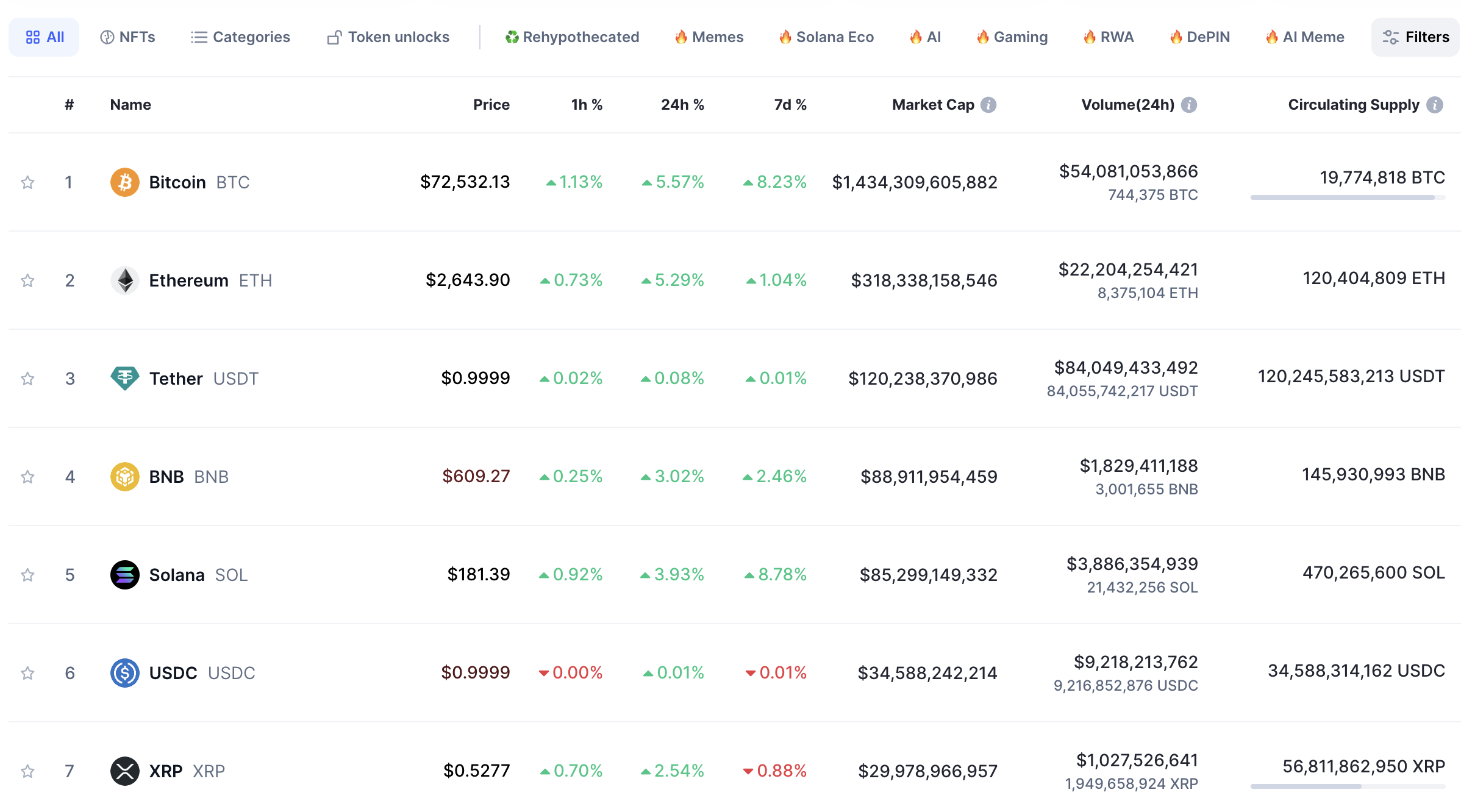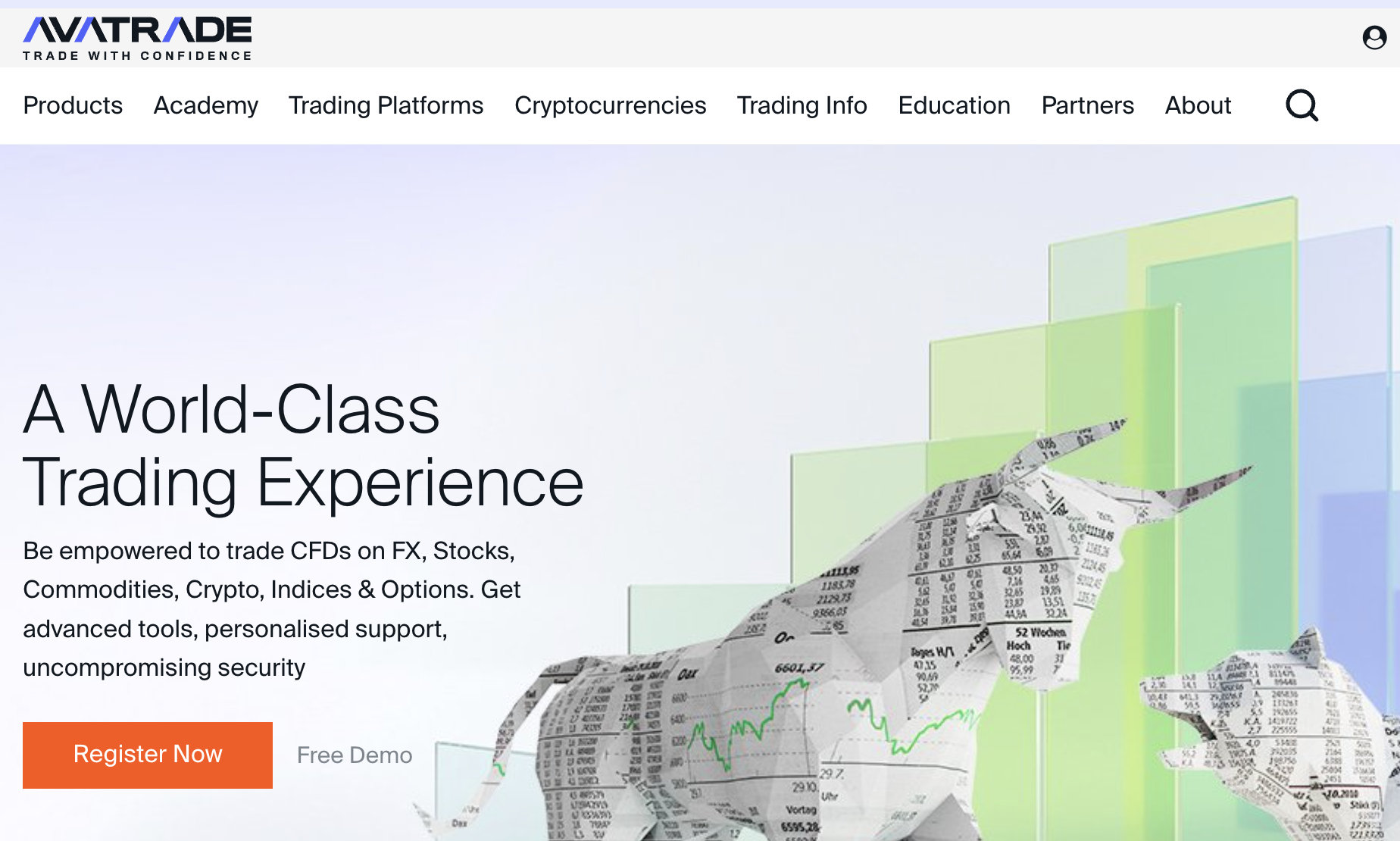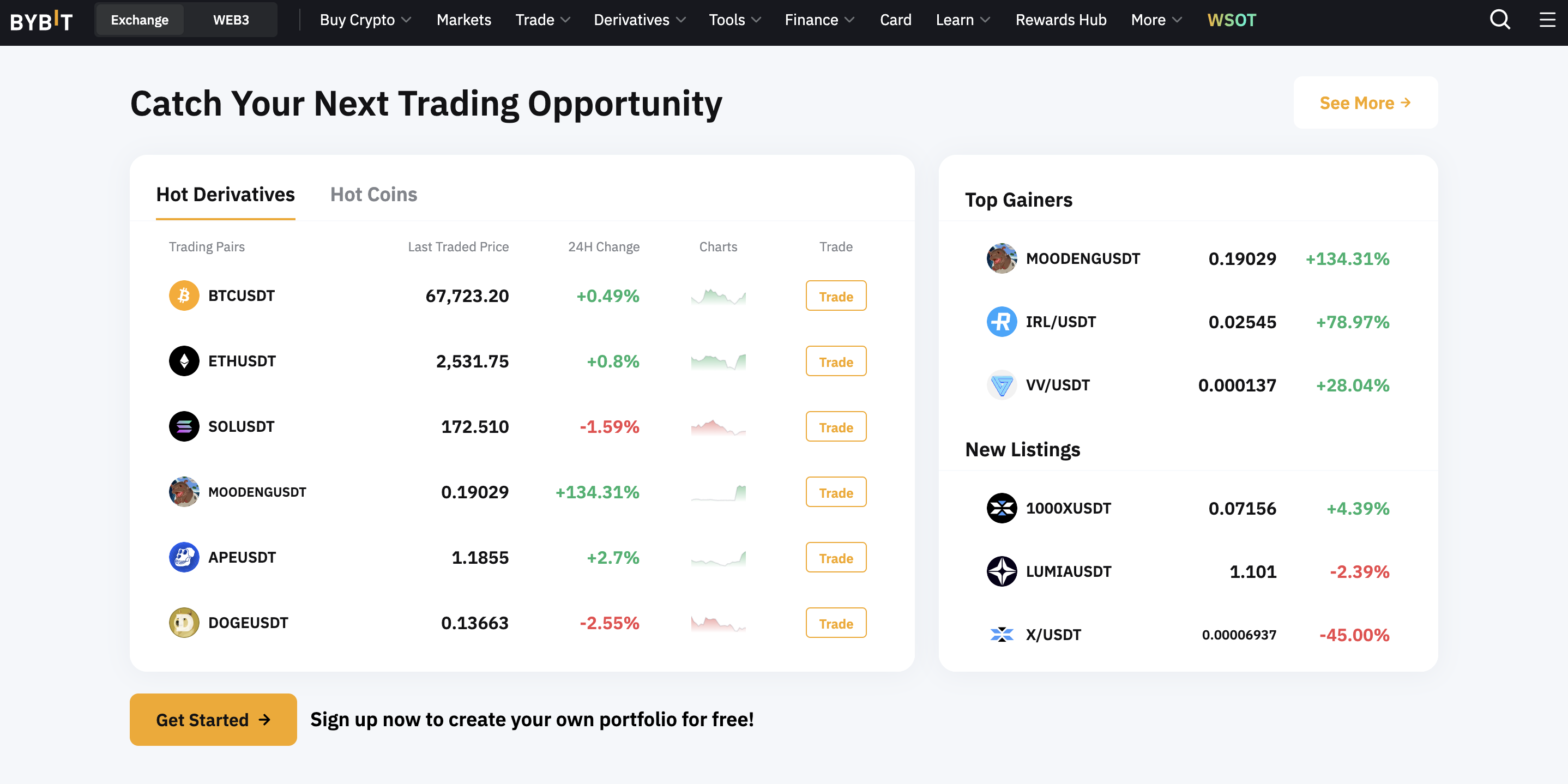Crypto assets are taking the finance world by storm, opening up new investing opportunities. From Bitcoin to the latest NFTs, they transform how we view ownership and value in the digital era.
However, with their high volatility, trading these assets can be challenging. That’s where automated trading tools help. They make it seamless to buy and sell crypto with minimal effort.
This guide helps beginners in exploring the crypto landscape. We cover everything from the fundamentals of crypto assets to tips on picking the best automated bots.
Let’s get started with the key points regarding crypto asset trading. Crypto assets are digital currencies that rely on cryptography to secure transactions and verify transfers. They operate on decentralized blockchain networks, which record every transaction across a vast computer network. This decentralized nature makes crypto assets both secure and resistant to censorship. However, the crypto world extends beyond just digital currencies. Today, there are different types of crypto assets serving a wide array of purposes. They’re attractive due to the high potential returns and seamless accessibility. However, they also have notable risks, such as extreme volatility, and regulatory uncertainty. Crypto assets come in different forms, each with its own unique purpose within the digital economy. Bitcoin is the first and most well-known crypto asset, created in 2009. Its influence has paved the way for the broader crypto market, setting the standard for other digital currencies. ‘Altcoin’ is a broad term that encompasses any crypto that’s an alternative to Bitcoin. This includes all digital coins, whether designed as standalone currencies (like Ethereum) or used within specific platforms (like Shiba Inu). You’ll also encounter the term ‘utility tokens’. These altcoins grant access to a product or service within a specific ecosystem. They also allow users to engage with features specific to that network. Stablecoins have their value linked to a reserve asset – such as fiat currencies or commodities. This makes them more stable than traditional cryptocurrencies – hence the name. As such, stablecoins are attractive for transactions and as a store of value. Examples include USDT, USDC, and DAI. Stablecoins are often used in trading, lending, and remittances – providing a reliable means of exchange in the crypto space. NFTs represent a unique form of digital ownership for specific items, assets, or pieces of content. Unlike cryptocurrencies, NFTs aren’t interchangeable. Instead, each NFT is one-of-a-kind, giving it unique value. NFTs have achieved a massive following in the art world. They allow creators to tokenize their work and market it directly to collectors. With NFTs, buyers also enjoy verifiable ownership and provenance. Derivatives are flexible and are thus popular among traders. They allow traders to speculate on an asset’s price action without taking ownership. A CFD’s price is tied directly to the underlying crypto asset’s value. They enable traders to benefit from both rising and falling crypto markets, making it an attractive option for short-term trading. This flexibility permits traders to take advantage of price changes quickly. In contrast, buying crypto directly requires transferring tokens between wallets – which can take time and incur fees. CFDs, however, let traders execute their strategies instantly. There’s no need to manage digital wallets or wait for blockchain confirmations. This makes CFDs a fast and efficient way to trade crypto assets. Options let you lock in a future price for a crypto asset without immediately committing to a purchase or sale. Instead, traders can wait to see how the asset’s price moves and decide whether to buy or sell the option later. The only catch is that if a trade is executed, it has to happen on or before the option’s ‘expiry date’. The agreed-upon rate for buying or selling is the ‘strike price’. There are two core types of options – call and put. Using options, traders can hedge against price volatility and manage risk better. Futures contracts are agreements to trade a crypto asset at a preset price on a forthcoming date. Unlike options, futures obligate both parties to follow through on the agreement when the contract matures. Futures are particularly popular among high-volume traders for their liquidity and standardized terms. Perpetual contracts are similar to futures but without an expiration date. Meaning, they allow traders to hold positions indefinitely. This derivative is particularly popular in the crypto world, enabling continuous trading without rolling over contracts. Perpetual prices are anchored to the asset’s spot market value through ‘funding rates’. These are payments exchanged between long and short traders to maintain parity with the underlying asset price. When it comes to trading crypto assets, two predominant strategies stand out – long-term and short-term approaches. Each style has its own advantages, risks, and implications for investors. This makes it essential for traders to choose a strategy that best aligns with their financial goals and risk tolerance. A long-term approach involves purchasing crypto assets to hold them for an extended period. This could be anywhere from a few months or even years. In fact, the term HODLing (originating from the misspelling of ‘hold’) has become a popular mantra among crypto enthusiasts. HODLers believe in the long-term prospect of their investments. They often view market fluxes as temporary and don’t react to short-term price volatility. This strategy allows them to avoid the stress of crypto day trading and the risk of emotional decision-making. Long-term investors focus on fundamental analysis, evaluating the project’s potential, the technology behind the crypto asset, and market trends. Short-term trading is about making quick trades to capitalize on price fluctuations over days, hours, or even minutes. Traders engaging in this strategy often utilize technical analysis. They rely on charts and indicators to evaluate trade timings. Short-term traders use a variety of strategies. This includes arbitrage, intraday trading, scalping, grid strategies, and others. Each comes with a unique risk tolerance. Short-term trading can be highly lucrative, especially in an unstable crypto market, where prices can shift dramatically. However, it also holds higher risks due to the rapid volatility. It also demands the constant observation of market movements. Additionally, the emotional toll of short-term trading can lead to hasty decisions and potential losses. Here are some key benefits that make crypto asset trading an attractive option for many investors. Unlike traditional stock markets, which operate during standard business hours, the crypto market never sleeps. You can trade crypto assets virtually any time – day or night. This provides the flexibility to buy and sell during your preferred trading session. Additionally, 24/7 market access means plenty of windows to profit from trend fluctuations. Whether it’s a sudden news story or regulatory development, you can react immediately without waiting for the market to open. Crypto assets can also diversify your investment portfolio. They often have a low correlation with traditional assets like stocks and bonds. Meaning, they can help mitigate risks during market downturns. Furthermore, there are many ways to diversify within the crypto market. As mentioned, there are different kinds of crypto assets. Additionally, you can also invest in various sectors of the blockchain ecosystem, such as decentralized finance (DeFi), NFTs, and gaming platforms. By spreading your investments, you reduce the impact of poor-performing tokens on your overall portfolio. For example, if one crypto experiences a downturn, others may remain steady or even grow in value, helping to balance your investment risk. While crypto assets are risky, they can also yield substantial returns. Many have seen significant gains from their crypto investments. Such remarkable growth is not unique to Bitcoin. Others, like Ethereum and Solana, have also demonstrated impressive returns. Moreover, your potential for big gains is even greater if you invest in projects at their ground stage. For example, early backers of projects like Cardano or Chainlink reaped significant rewards as these assets matured and gained popularity. This underscores why it’s vital to do research and time your investments in the crypto space. That said, it’s crucial to approach crypto investments cautiously. The inherent risks can also lead to substantial losses if the selected projects don’t succeed. Getting started with crypto asset trading is seamless. It’s also a lot more accessible when compared to traditional finance. Many exchanges allow users to trade with a small amount of capital. And there are no minimum investment requirements for most crypto assets. Moreover, decentralized exchanges even allow crypto trading without any KYC requirement. This inclusivity opens the door to traders around the world. Now that we’ve covered the basics of crypto asset trading, let’s explore automation. Automated trading uses specialized software to execute crypto trades based on predefined methods. The key here is that the process happens without manual intervention. This software operates continuously, following set parameters to locate and take action on market opportunities. Today, there are many different kinds of automated trading bots. They can buy and sell based on triggers, such as price trends or indicators. Most importantly, they eliminate the need to watch the market around the clock. Traders can set up bots for various strategies, such as trend-based, grid, swing, or arbitrage. Some bots even use AI to alter strategies based on market conditions. Ultimately, bots are valuable for those with limited time or experience in active trading. Here’s a simple overview of how trading bots work: With bots, every executed trade and order is recorded in a detailed log for tracking and performance analysis. This makes it easy for traders to adjust the bot settings as needed. Let’s explore the main features that make crypto asset bots effective and valuable. Undeniably, automation is the backbone of crypto trading bots. Bots automatically execute positions based on specific instructions or signals. For instance, suppose a bot is designed to buy Bitcoin if its price falls by 10% and sell if it rises by 15%. It executes these trades instantly without waiting for the trader to take action. This also allows traders to take advantage of small, frequent price changes. This is a crucial feature in the 24/7 crypto market, where opportunities arise at virtually any time. Many trading bots come preloaded with specific strategies. Additionally, some providers also feature strategy builders. These enable traders to configure the bot with their own strategies. Such platforms provide text-based rules, advanced indicators, and charting tools. In other words, the top trading bots give you control over the strategy and execution. Many trading bots are designed to support a wide range of crypto assets. Moreover, you can run more than one bot from the same provider at a time. With multi-asset support, traders can apply different strategies tailored to specific assets. For instance, you can operate a scalping bot for high-liquidity coins and another one with DCA for less stable assets. Meaning, traders can balance aggressive and conservative strategies within the same account. This enables traders to diversify and reduce the risks associated with any single crypto. In simple terms, backtesting highlights how your bot would’ve performed in the past. Imagine you want to use the ‘Mean Reversion’ strategy to trade Ethereum, but you’re unsure if it’s profitable. Instead of risking real money, you ‘backtest’ by applying that idea to past data. If it performs well, you might feel confident trying it out in the real trading markets. If not, you can adjust your strategy before using actual funds. In short, backtesting helps traders understand a strategy’s success (or failure) without risking money upfront. Furthermore, most bots can trade in ‘demo mode’, which mirrors live trading conditions. This is where the bot trades using simulated funds, letting you practice without any financial risk. In essence, these testing features ensure you manage risk more effectively. Automated trading bots enhance risk management through advanced order types. This help traders limit losses and secure profits. Examples include: By leveraging these order types, automated bots help maintain trading discipline for better outcomes. Some bots allow users to copy strategies from successful traders or join a trading community. Additionally, certain providers offer pre-built bot strategies that users can directly copy and automate. This gives beginners a straightforward entry into automated trading without needing expert knowledge. Copy trading can also be a useful tool for managing risks. Users can diversify their portfolios by following multiple strategies from experienced traders or bots. By mirroring successful strategies, beginners can learn and earn simultaneously. On the other hand, seasoned traders can explore new strategies without committing extra time to setup and testing. Selecting the right platform for trading crypto assets can greatly impact your experience and success. Here are some of the key features to consider when choosing the best platform: Based on the abovementioned factors, we have picked the top crypto trading platforms supporting automated bots. AvaTrade is a well-established online broker offering a diverse range of trading instruments. These include forex and CFDs on stocks, indices, commodities, and crypto assets. The platform, with its user-friendly interface and advanced trading tools, caters to both rookie and experienced traders. AvaTrade supports multiple trading interfaces, including its proprietary AvaTradeGO mobile app, MT4 and MT5. Its copy trading app, AvaSocial, is another interesting feature that lets users replicate others’ strategies. Crucially, AvaTrade has built a solid reputation with its regulatory licenses from nine different jurisdictions. When it comes to fees, AvaTrade offers a commission-free structure. It also has highly competitive spreads. AvaTrade also provides a free demo account, educational resources, and dedicated customer support, making it accessible for beginners. Pros: Cons:
Bybit is a prominent crypto exchange that launched in 2018. It offers a comprehensive suite of trading markets – including spot, futures, options, and perpetual contracts. Bybit supports thousands of crypto assets, including Bitcoin, altcoins, and NFTs. Put otherwise – it’s a one-stop-shop for building a diversified crypto portfolio. Bybit users can buy crypto assets directly with fiat money. In terms of trading, Bybit provides robust charts and indicators. It also has TradingView integration and margin trading tools. Other top features include a range of automated trading bots. These come with preset strategies that are useful for intraday and high-frequency trading. Bybit is also known for its competitive fee structure, with a standard 0.1% trading fee on spot markets. Futures trading fees are capped at 0.2% for makes and 0.055% for takers. Discounts are also offered for high-volume traders. Additionally, Bybit offers a free demo account for testing strategies. Other tools like portfolio tracking and risk management features further add to Bybit’s appeal. Pros: Cons: With the right trading platform, it’s time to turn your attention to crypto bots. Let’s walk through what to consider when choosing the best trading bot to match your strategy. Your choice of a trading bot will depend largely on your specific trading goals. These days, there are a variety of long and short crypto trading bots available, catering to different styles. It’s best to first understand the different bot strategies that are available before making your choice. Different bots offer unique features that can make or break your trading experience. Here are some important features to evaluate: Aside from these standard features, consider those specific to you. For instance, beginners might need extensive documentation or support. On the other hand, seasoned pros might want strategy designers that support coding. A trading bot’s performance depends on how effectively it executes trades and reacts to the market. Since the crypto markets are open 24/7, choosing a bot that consistently performs well without constant maintenance is essential. As such, consider: Pricing structures vary widely between trading bots. Some charge monthly fees, while others operate on a one-time purchase or a commission basis. Common pricing models include. Evaluate how much you’re ready to invest in a bot and choose a pricing plan that matches your budget and trading goals. AI-based capabilities are improving at an alarming rate, including trading bots. These bots use AI and machine learning to analyze the market and find trading opportunities. Crucially, they adapt to the market, finding the right strategies and adjusting approaches in real-time. The top AI trading bots evolve over time, as they identify market patterns. When exploring AI bots, check out Algobot. It leverages 100+ technical indicators to find suitable trading strategies. Here are some of the top features that make Algobot attractive: With its range of intelligent features, Algobot provides a comprehensive solution for beginners and professionals.
Here’s a step-by-step guide to help you get started with crypto asset trading bots. To start crypto asset trading, you should first have an exchange account. If you prefer a regulated broker, AvaTrade is a top choice. It supports a wide range of crypto CFDs at competitive fees. Alternatively, you can opt for a conventional exchange like Bybit, which gives you access to various crypto derivatives and advanced trading tools. After choosing an exchange, sign up for the platform and complete any necessary verification steps. You’ll also need to deposit before trading. Next, you should explore the best trading bots in the cryptocurrency markets. You can refer to our previous section to decide on the right provider. Next, visit your exchange account and generate the API keys. This gives the bot your account access without compromising security. Make sure you only enable trading permissions, not withdrawal permissions, to secure your funds. After the API and secret keys are generated, copy-paste them into your trading bot’s interface. If you utilize a third-party integration like Cornix, the API keys must be entered into that platform instead of the trading bot itself. This connection enables real-time trading based on your bot’s strategy and access to current market data. Adjust the bot’s parameters according to your preferred strategy. Set rules for buy and sell conditions, such as using moving averages or other indicators to trigger trades. Additionally, configure the risk management settings. This includes establishing stop-loss, take-profit, and position-sizing rules. Bots are highly responsive, so having these safeguards helps prevent excessive losses. The best crypto trading bots come with backtesting and demo trading support. Use these features to simulate your bot’s performance under various market conditions. Analyze metrics like profit ratio, drawdowns, and trade frequency to assess the bot’s effectiveness. Remember to fine-tune parameters based on the backtesting results. This improves accuracy and profitability before activating live trading. Once satisfied with the test results, activate the bot for live trading. Most platforms allow you to switch between ‘live’ and ‘demo’ modes at the click of a button. Track the bot’s performance regularly, looking for issues or adjustments needed due to market shifts. You can also stop your bot at any time. Periodically review and fine-tune the bot’s strategy to ensure it adapts to market trends. Crypto asset trading opens up unique possibilities for profit and diversification. This 24/7 market is ideal for active traders who want continuous access to new opportunities. Automated tools have made crypto trading more accessible and efficient. These bots analyze large volumes of data, execute complex strategies, and trade continuously. This removes the need for constant monitoring. However, it’s crucial to find the right trading bot by considering your needs, budget, and risk tolerance. Crypto assets are digital currencies that use cryptography for secure transactions on decentralized networks. Common types include Bitcoin, altcoins, stablecoins, and NFTs – each with different uses in the digital market. To trade crypto assets, open an account with an exchange/broker and deposit funds. To manage trades, you can use various strategies and tools, including automated trading bots. Yes, it’s legal to automate crypto trading as long as you comply with local regulations and the terms of the trading platform. However, verifying rules in your jurisdiction is essential, as regulations vary. Automated crypto trading can be profitable, but results depend on the strategy, market conditions, and bot settings. While bots can optimize trades, they also carry risks and don’t guarantee profits. Trading crypto assets with AI can be safe if using reputable platforms and ensuring proper security settings. However, market volatility means there’s always some level of risk involved.Crypto Assets and Automated Trading: Key Takeaways
What are Crypto Assets?
Types of Crypto Assets
Bitcoin and Altcoins

Stablecoins
NFTs
Crypto Derivatives
Contracts for Difference (CFDs)
Options

Futures
Perpetuals
Long-term vs Short-term Crypto Assets Trading
Long-term Trading
Short-term Trading

Benefits of Trading Crypto Assets
24/7 Market Access
Diversification
Potential for High Returns

Lower Barriers to Entry
What is Crypto Assets Automated Trading?
How Does an Automated Crypto Tool Work?
Key Features of Crypto Trading Bots
Automated Trade Execution

Preset Strategies and Customization
Multi-Asset Support
Backtesting and Simulation
Advanced Risk Management
Social and Copy Trading

How to Pick the Best Crypto Asset Trading Platform
Best Platforms for Trading Crypto Assets
1. AvaTrade – Established Online Broker Offering Crypto CFDs

2. Bybit – Popular Crypto Exchange With Built-in Trading Bots

Selecting a Crypto Asset Trading Bot
Define Your Trading Goals
Key Features to Look for in a Trading Bot
Assess Performance and Reliability
Consider Pricing and Subscription Options
AI-Integrated Crypto Asset Trading Bots
How to Set Up Automated Trading for Crypto Assets
Choose a Reliable Trading Platform
Pick Your Trading Bot
Connect Bot to Trading Platform via API

Set Up and Configure Bot Parameters
Test and Optimize
Launch and Monitor the Bot
Conclusion
FAQs
What are crypto assets?
How to trade crypto assets?
Is it legal to automate crypto trading?
Is automated crypto trading profitable?
Is trading crypto assets with AI safe?








